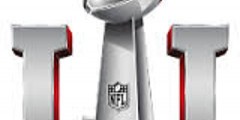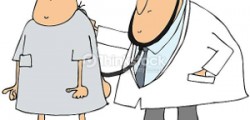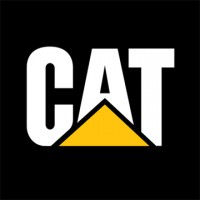Cat posts loss for 2016; signs of recovery starting to emerge
- Details
- Published on Thursday, 26 January 2017 16:18
- Written by Paul Gordon
After reporting that 2016 ended with its first loss in several years and that 2017 would add to the string of challenging years, Caterpillar Inc. said it does see signs of recovery in many of its businesses and in areas of the world where it trades.
It will, however, probably be at least another year before those positive signs find their way to the company’s bottom line.
With sales and revenues for the year down 18 percent, Caterpillar announced Thursday that it lost 11 cents a share for the year, compared with a profit of $4.18 a share in 2015, and $2 a share for the fourth quarter, compared with a loss of 16 cents a share a year earlier, as global economies continued to struggle. It was the first recorded loss since 2011.
The losses included three large non-cash charges the company took in 2016 as well as higher-than-expected restructuring charges. Removing those items, it said, and the company had a profit of $3.42 a share for the year and 83 cents a share in the fourth quarter.
Sales and revenues fell from $47 billion in 2015 to $38.5 billion in 2016, including a drop from $11 billion to $9.6 billion in the fourth quarter.
The results were well below Wall Street expectations and that, combined with a still-cautious outlook for 2017 caused many in the investment community to sell Caterpillar shares. The company’s stock closed at $97.22 a share, down from $98.15 a share. Nearly 9.1 million shares, or almost twice as many as the daily average, were traded on the New York Stock Exchange.
“Our results for the fourth quarter, while slightly better than expected, continued to reflect pressure in many of our end markets from weak economic conditions around much of the world,” said CEO Jim Umpleby, who took over that position from Doug Oberhelman on Jan. 1. Oberhelman remains chairman of the board through March, when he will retire.
“Our team did a great job in the quarter, as they have all year, aligning our cost structure with current demand while preserving capacity for the future. I’m confident we are focusing on the right areas: controlling costs, maintaining a strong balance sheet and investing in the key areas important to our future,” Umpleby said.
Caterpillar said it adjusted its financials to remove the extraordinary items because “we do not consider these items to be indicative of earnings from ongoing business activities” and that showing adjusted figures “provides a useful perspective on underlying business results and period-over-period changes.”
The items in question included a loss incurred from the remeasurement of pension plans, a goodwill impairment charge based on the continued losses in the resource industries segment and a deferred tax allowance. Those three items are explained in full in the company’s report on www.caterpillar.com.
Also, the company incurred restructuring costs of over $1 billion, stemming from reorganizing throughout its operations and around the world. In the past 18 months Caterpillar has cut its worldwide employment by more than 16,000 people and has closed or consolidated several facilities in order to save costs.
In 2016 alone the company saved $2.3 billion by taking those actions, it said.
The company added, however, that there will likely be more restructuring needed in 2017. But Amy Campbell, director of investor relations for Caterpillar, told reporters that company does not expect any more broad-based reductions in employees. She said the restructuring costs in 2017, expected to be about $500 million, mostly will be in closing or consolidating additional facilities.
The 2017 outlook calls for sales and revenues of about $37.5 billion with a profit of about $2.30 a share, including restructuring costs.
Campbell said the company is seeing positive signs, including an increase in orders and economic recovery in some countries where it does business, such as China. There are signs, she added, that the depressed mining industry may have bottomed.
“But we are remaining cautious in our outlook because there is still a lot of uncertainty in the global economy,” Campbell said.
Among the uncertainty, the company said, is how quickly any recovery in the resource industries may occur and affect sales. The same is true for the construction industry in North America and how Brexit will affect Europe.
Campbell said the election of Donald Trump as president did not affect the outlook for 2017 because the items he has said he will push for that would help Caterpillar would take at least into 2018 to have a meaningful effect. “We hope that corporate tax reform and infrastructure spending will happen,” she said.
Asked the company’s opinion about Trump’s decision to pull the United States out of the TransPacific Partnership trade project she said the company has and will continue to advocate for free trade. Noting that more than half of the sales of equipment made in East Peoria and Decatur is exported, Campbell said, “If it’s not TPP, what else is there? (Not being part of TPP) will have a big impact on farmers, as well.”
President Trump also has said he will renegotiate the North American Free Trade Agreement, commonly known as NAFTA, because he doesn’t believe the U.S. has been treated fairly in that pact affecting trade with Canada and Mexico. “I’m sure it can be improved, but NAFTA has been good for Caterpillar, its dealers and its customers. (Through reduced tariffs) we have saved quite a bit of money,” Campbell said.



















































